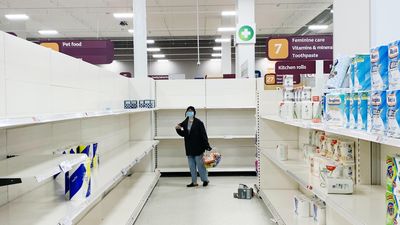Photo by Carlos de Toro @carlosdetoro on Unsplash
In our latest look at the Coronavirus' lasting impact on global Grocery Retail, we examine eight emerging trends that are set to redefine the industry's future.
Value becomes a decision maker
As global economies tighten, financial strain will prompt certain behaviours from shoppers; not only will they become more frugal in their spending, they will also make greater use of existing food stores and become less wasteful in their quest to reduce outgoings. As a result, value will become an increasingly vital factor in store and product choice.
This has major implications for Retailers and CPG brands:
- Private labels and discount brands will experience strong growth amongst value-centric shoppers.
- Non-grocery spend will fall as budgets tighten and non-essential purchases fall away.
- Discount stores that can deliver a "one-stop shop" experience could make significant gains.
Localized shopping means new challenges ahead
Even as lockdown measures ease in some countries, many shoppers are likely to try and stay as close to home as possible. Hypermarket-sized stores may have provided shoppers with bulk-buying opportunities during the initial outbreak, but sales volumes in those formats have now tapered off significantly. Instead, smaller and convenience format stores are now the de facto choice for consumers who would prefer (or are still mandated) to stay local.
As a result:
- Spending patterns are changing, with Customers choosing to carry out full shops closer to home.
- Cross-shopping has fallen by the wayside as shoppers limit the number of stores they frequent.
- Strong action will be required to retain new shoppers and regain lost custom as the situation evolves.
Food adventures will continue to happen at home for the foreseeable future
One in five British shoppers are now cooking every meal from scratch, up from just one in eight before the pandemic began. While restaurants, cafés, and bars will slowly begin to open up as social distancing restrictions ease, many Customers – particularly higher-risk individuals – are likely to continue their food adventures in the comfort of their own home rather than risk potential exposure.
For Retailers, this means:
- Meeting greater demand for fresh and frozen products in favour of pre-prepared lines.
- Educating and inspiring shoppers to try new recipes via online platforms.
Health, wellbeing, and humane behaviour become new benchmarks
Not only has the virus prompted Customers to raise their spending on personal and home hygiene products, we've seen it drive a similar rise in healthy eating as shoppers seek to build their natural immunity as best they can. Concerns aren't just limited to their own wellbeing, either; recent weeks have seen debates ranging from the safety and protection of Retail staff, to the need for a wholesale re-evaluation of global meat consumption.
Addressing this heightened awareness around health means:
- Supporting Customers with their renewed focus on health, nutrition, and mental wellbeing.
- Focusing hard on hygiene and humanitarianism – not only with regard to employee and Customer wellbeing, but in terms of animal welfare in the supply chain, too.
Online Retail reaches the tipping point
Soaring demand for home delivery and click and collect services prompted many Retailers to ramp up their online operations, and early indications suggest that this change will be anything but short-lived. Online sales now sit somewhere between two and four times those seen pre-outbreak, limited more by Retailer capacity than by Customer demand. The digital tipping point is here, Customers convinced by recent experience that online represents a viable way to shop going forwards.
Retailers looking to optimise their online operations now should consider:
- Expanding capacity via 'last mile' innovations, from offering click and collect in smaller stores to partnering with fulfilment companies in order to expand delivery networks.
- Ensuring that new shoppers become repeat Customers, making first shops easy, reliable and value-laden.
Expectations for digital grow in tandem with the online boom
As frugality and wellbeing come to dominate the Customer mindset, their expectations around technology won't be limited to online channels alone. Digital innovations that make shopping easier, faster, safer and lower-contact will all be sought after, with shoppers looking to Retailers to deliver useful and helpful new applications.
Areas of focus should include:
- Pre-trip planning applications that enable crowd avoidance based on levels of in-store custom.
- Touch-free replacements for vouchers, receipts, lists and payment.
- Additional investment in technologies that reduce one-on-one contact such as self-scan and self-service checkouts.
Public goodwill must not be misspent
In 2020, stores have become something more. Customers have come to see supermarkets, stores, and employees not merely as a means to an end, but as pillars of their local community – essential services and key workers helping them navigate a period of unprecedented disruption. This social capital will prove to be hugely valuable, but only for Retailers who demonstrate an unwavering willingness to operate for the public good.
Harnessing the power of this deeper connection with Customers will mean:
- Increasing or maintaining activities that benefit local communities such as food banks and charity initiatives.
- Supporting local and national food producers and minimising their overall supply chain.
Market consolidation will define the years ahead
As the economy contracts, competition will only get fiercer. As weaker operators begin to struggle, larger Retailers are likely to benefit from their scale, forming global alliances and buying groups that enable them to operate more efficiently and purchase key lines in larger volumes. A period of consolidation is likely to follow, these larger chains scaling up as smaller competitors fall away.
To prepare for this period, Retailers should:
- Focus on resetting and simplifying their assortments, as discussed in our previous post.
- Lay the groundwork for new partnerships that can enable more efficient and productive operations.
For more information on retail strategies beyond the virus, please watch our webinar on demand | Future Outlook: Consumer and Retail shifts for Grocery & Pharmacy post-Coronavirus
